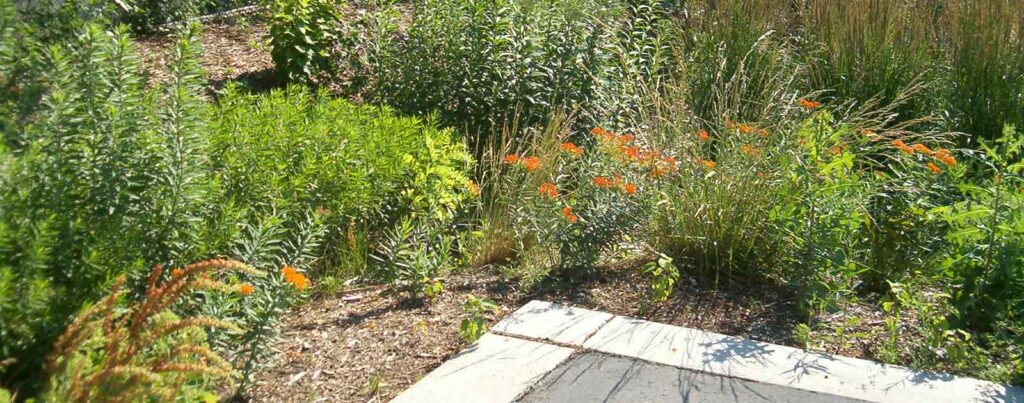The Value Of Green Infrastructure


Communities across the country are struggling to deal with the rising costs of controlling stormwater runoff and sewer overflows. Crumbling infrastructure and the expansion of hard surfaces such as pavement and roofs are sending polluted stormwater and sewage into surrounding waterways with increasing frequency. A changing climate defined by more severe storms will only increase this burden.
In the face of these challenges, many communities are embracing a new approach to managing runoff that focuses on capturing rainfall and preventing it from polluting surrounding waterways. By using green infrastructure techniques such as green roofs, rain gardens, tree planting, and permeable pavement, they are managing stormwater problems at a lower cost and realizing a wide range of other benefits from reduced air pollution, energy use, and urban heat island effect to improved wildlife habitat and aesthetics. These techniques also provide defenses against more frequent and severe heat waves, droughts, and flooding that a changing climate is bringing to many urban areas. Green infrastructure is a powerful tool for managing existing problems and preparing for the future.
A Challenge To Green Infrastructure Implementation
The Value of Green Infrastructure helps municipalities overcome a key barrier to more widespread adoption of green infrastructure. Our failure to value the full range of benefits from green infrastructure and the difficult challenge to translate these benefits into dollar figures so they can be compared to alternatives is restricting comprehensive integration of green infrastructure into local water management. And, determining the value of green infrastructure benefits for a locality has required studies beyond the resource capacity of most localities.
Evaluating The Benefits Of Green Infrastructure In Your Community
The guide produced by the Center for Neighborhood Technology and American Rivers, provides a framework that allows local communities to assess the local benefits of green infrastructure. The guidebook outlines a methodology for measuring and valuing the improvements in air quality, energy savings, carbon sequestration, and other areas. These benefits are above and beyond the stormwater control benefits, which are assumed to be equal to a similar investment in gray infrastructure. This guide allows communities to make more educated investments in infrastructure by helping them evaluate the full range of benefits from sustainable approaches to water management and realize green infrastructure’s potential to make communities more livable and less vulnerable to climate change.


